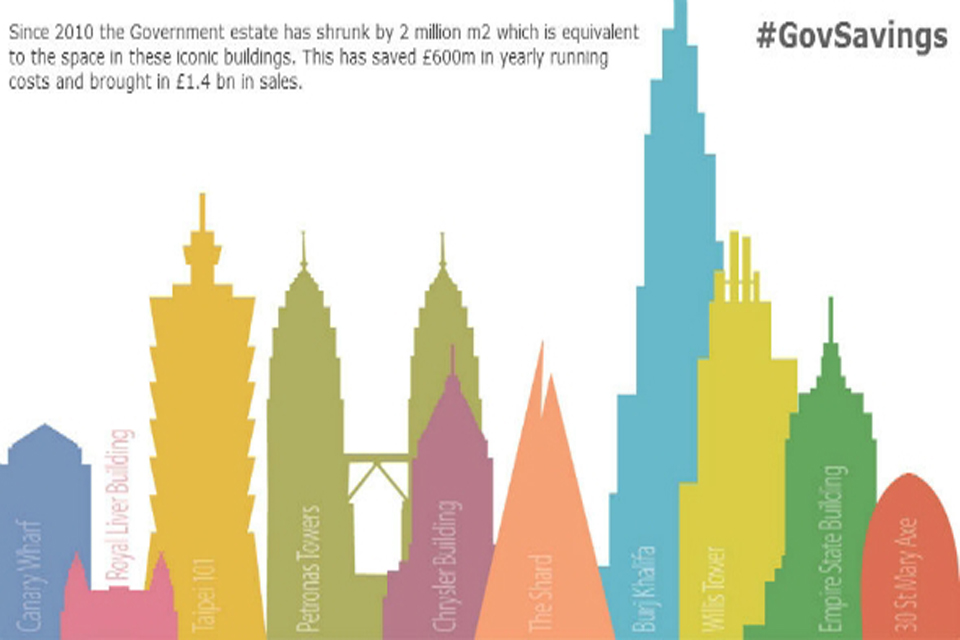Whitehall palaces: a thing of the past
The Government Estate Strategy sets out plans to reduce the number of government buildings in central London by more than 80%.

Francis Maude has announced new plans to reduce the number of government buildings in central London and move more workspaces to the London suburbs. The number of government buildings in central London is planned to fall from 143 in 2010 to 23 buildings shortly after 2020.
Read the Government Estate Strategy.
The plans are part of the Government Estate Strategy, which sets out measures to:
- help civil servants work more effectively
- boost economic growth
- save billions for the taxpayer
The government has already moved out of 1,650 buildings across the UK since 2010 – saving more than £600 million in cumulative running costs and raising £1.4 billion for the taxpayer.
Moving workspaces to the London suburbs
Measures also include moving departments away from expensive Whitehall accommodation into the wider London boroughs. For instance, the Home Office runs a major satellite office in Croydon and the Ministry of Justice is trialling a mini-commuter hub created by the Cabinet Office.
Moving half of London-based civil servants away from Whitehall could save taxpayers billions by 2030. For instance, it costs £35,000 per year to base someone in Ministry of Defence Whitehall headquarters, compared to £3,000 at the UK Visas and Immigration offices in Croydon.
The government is working with local authority partners to look at new location options in areas like Stratford and Croydon. The move would also bring growth and regeneration to the areas.
Disposing of government buildings
The government is also moving out of inefficient government buildings across the country and opening them up to the market. So far the number of government buildings in the capital has been reduced from 143 in 2010 to 71 today. This is planned to go down to 23 buildings shortly after 2020.
Departments will also continue to share facilities and locations to make sure services are integrated and customer-focused.
Other initiatives
The strategy also sets out other steps that government can take to use their property more efficiently, such as:
- publishing better information and advanced notice about possible property sales
- central and local government bodies reinvesting the money they secure through property sales to encourage further disposals
- charging departments for freehold property to make sure they get the most value out of taxpayers’ money
- reducing the average target space per employee from 10 to 8 square metres by March 2018
Minister for the Cabinet Office Francis Maude said:
As part of our long-term economic plan this government is cutting waste to save taxpayers millions. Since 2010 we have got out of property 26 times the size of Buckingham Palace and halved our government buildings in London. Hard-working families expect us to do more and we will – shortly after 2020 there should be just 23 government buildings in our capital, releasing surplus space for housing and businesses.

Find government property to use, rent or buy
If you’re an SME, charity or social enterprise, you may be able to use government workspaces free of charge. Visit Space for Growth for more.
You can also find government property and land to rent or buy, or challenge public sector use of land through Right to Contest.